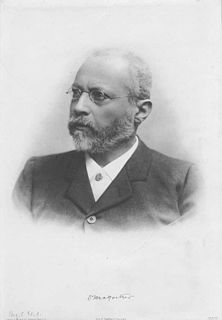This page is based on this
Wikipedia article Text is available under the
CC BY-SA 4.0 license; additional terms may apply.
Images, videos and audio are available under their respective licenses.

Algebraic topology is a branch of mathematics that uses tools from abstract algebra to study topological spaces. The basic goal is to find algebraic invariants that classify topological spaces up to homeomorphism, though usually most classify up to homotopy equivalence.

In mathematics, a topological group is a group G together with a topology on G such that the group's binary operation and the group's inverse function are continuous functions with respect to the topology. A topological group is a mathematical object with both an algebraic structure and a topological structure. Thus, one may perform algebraic operations, because of the group structure, and one may talk about continuous functions, because of the topology.
In mathematics, more specifically in the area of abstract algebra known as ring theory, a Noetherian ring is a ring that satisfies the ascending chain condition on left and right ideals, which means there is no infinite ascending sequence of left ideals; that is, given any chain of left ideals,

Commutative algebra is the branch of algebra that studies commutative rings, their ideals, and modules over such rings. Both algebraic geometry and algebraic number theory build on commutative algebra. Prominent examples of commutative rings include polynomial rings; rings of algebraic integers, including the ordinary integers
; and p-adic integers.
The Riemann–Roch theorem is an important theorem in mathematics, specifically in complex analysis and algebraic geometry, for the computation of the dimension of the space of meromorphic functions with prescribed zeroes and allowed poles. It relates the complex analysis of a connected compact Riemann surface with the surface's purely topological genus g, in a way that can be carried over into purely algebraic settings.
In algebra, ring theory is the study of rings—algebraic structures in which addition and multiplication are defined and have similar properties to those operations defined for the integers. Ring theory studies the structure of rings, their representations, or, in different language, modules, special classes of rings, as well as an array of properties that proved to be of interest both within the theory itself and for its applications, such as homological properties and polynomial identities.
In mathematics, combinatorial topology was an older name for algebraic topology, dating from the time when topological invariants of spaces were regarded as derived from combinatorial decompositions of spaces, such as decomposition into simplicial complexes. After the proof of the simplicial approximation theorem this approach provided rigour.
In mathematics, Stone's representation theorem for Boolean algebras states that every Boolean algebra is isomorphic to a certain field of sets. The theorem is fundamental to the deeper understanding of Boolean algebra that emerged in the first half of the 20th century. The theorem was first proved by Marshall H. Stone (1936). Stone was led to it by his study of the spectral theory of operators on a Hilbert space.
In mathematics, the Lasker–Noether theorem states that every Noetherian ring is a Lasker ring, which means that every ideal can be decomposed as an intersection, called primary decomposition, of finitely many primary ideals. The theorem was first proven by Emanuel Lasker (1905) for the special case of polynomial rings and convergent power series rings, and was proven in its full generality by Emmy Noether (1921).
In mathematics, ideal theory is the theory of ideals in commutative rings; and is the precursor name for the contemporary subject of commutative algebra. The name grew out of the central considerations, such as the Lasker–Noether theorem in algebraic geometry, and the ideal class group in algebraic number theory, of the commutative algebra of the first quarter of the twentieth century. It was used in the influential van der Waerden text on abstract algebra from around 1930.

Max Noether was a German mathematician who worked on algebraic geometry and the theory of algebraic functions. He has been called "one of the finest mathematicians of the nineteenth century". He was the father of Emmy Noether.
In mathematics, the Riemann–Roch theorem for surfaces describes the dimension of linear systems on an algebraic surface. The classical form of it was first given by Castelnuovo, after preliminary versions of it were found by Noether (1886) and Enriques (1894). The sheaf-theoretic version is due to Hirzebruch.

In mathematics and physics, the term generator or generating set may refer to any of a number of related concepts. The underlying concept in each case is that of a smaller set of objects, together with a set of operations that can be applied to it, that result in the creation of a larger collection of objects, called the generated set. The larger set is then said to be generated by the smaller set. It is commonly the case that the generating set has a simpler set of properties than the generated set, thus making it easier to discuss and examine. It is usually the case that properties of the generating set are in some way preserved by the act of generation; likewise, the properties of the generated set are often reflected in the generating set.
In mathematics, a representation theorem is a theorem that states that every abstract structure with certain properties is isomorphic to another structure.
The Faculty of Mathematics and Computer Science is one of twelve faculties at the University of Heidelberg. It comprises the Institute of Mathematics, the Institute of Applied Mathematics, the School of Applied Sciences, and the Institute of Computer Science. The faculty maintains close relationships to the Interdisciplinary Center for Scientific Computing (IWR) and the Mathematics Center Heidelberg (MATCH). The first chair of mathematics was entrusted to the physician Jacob Curio in the year 1547.






